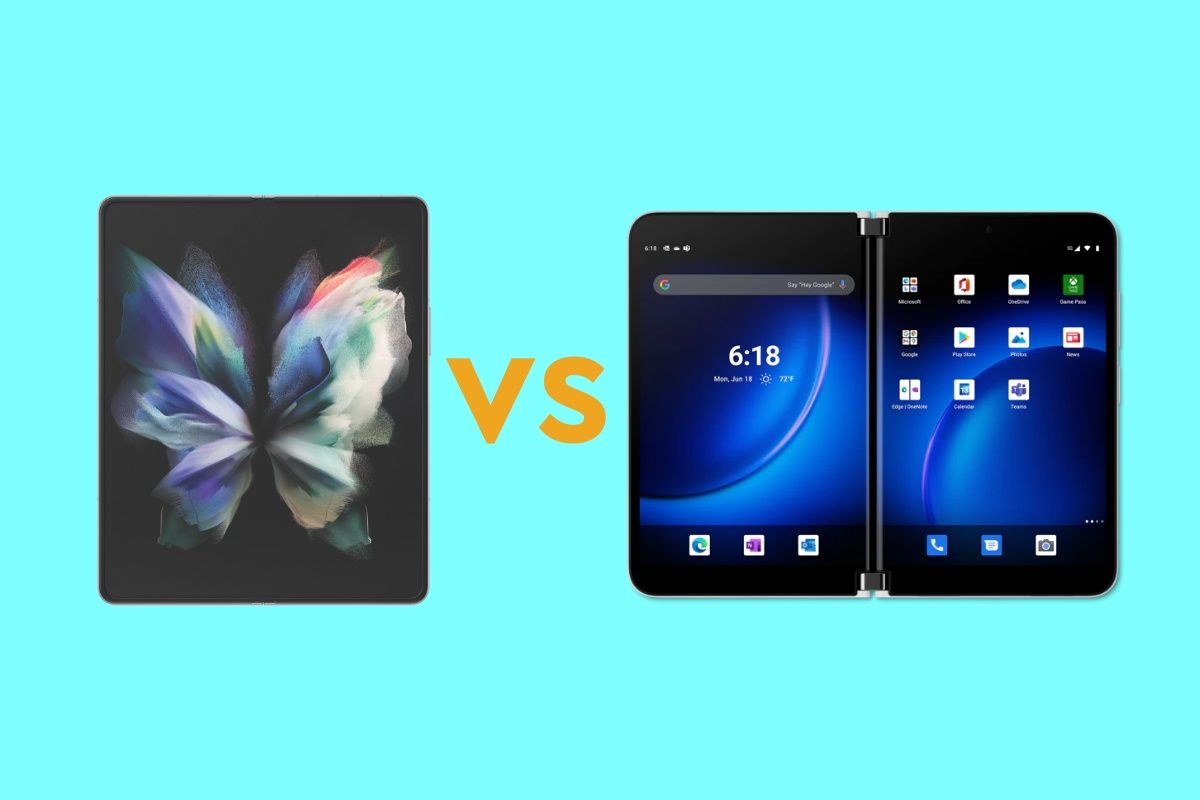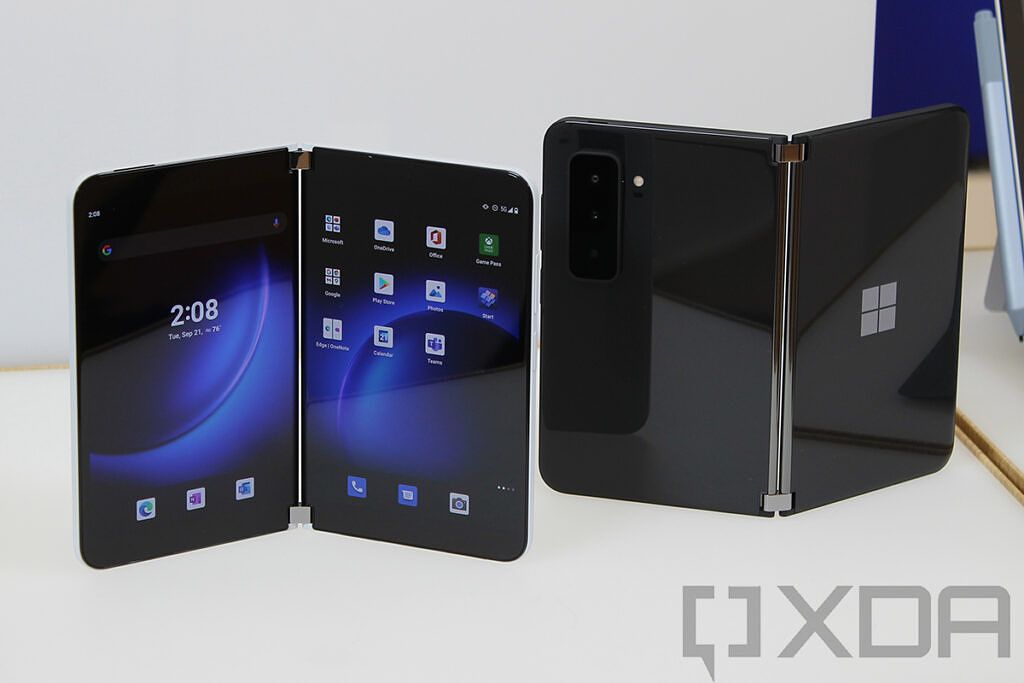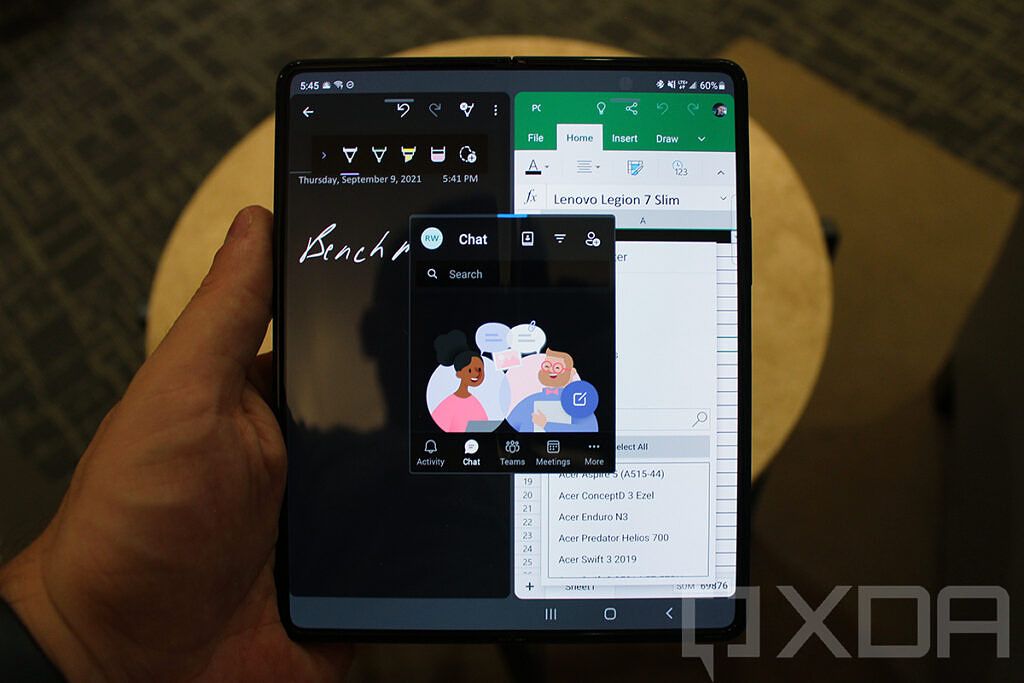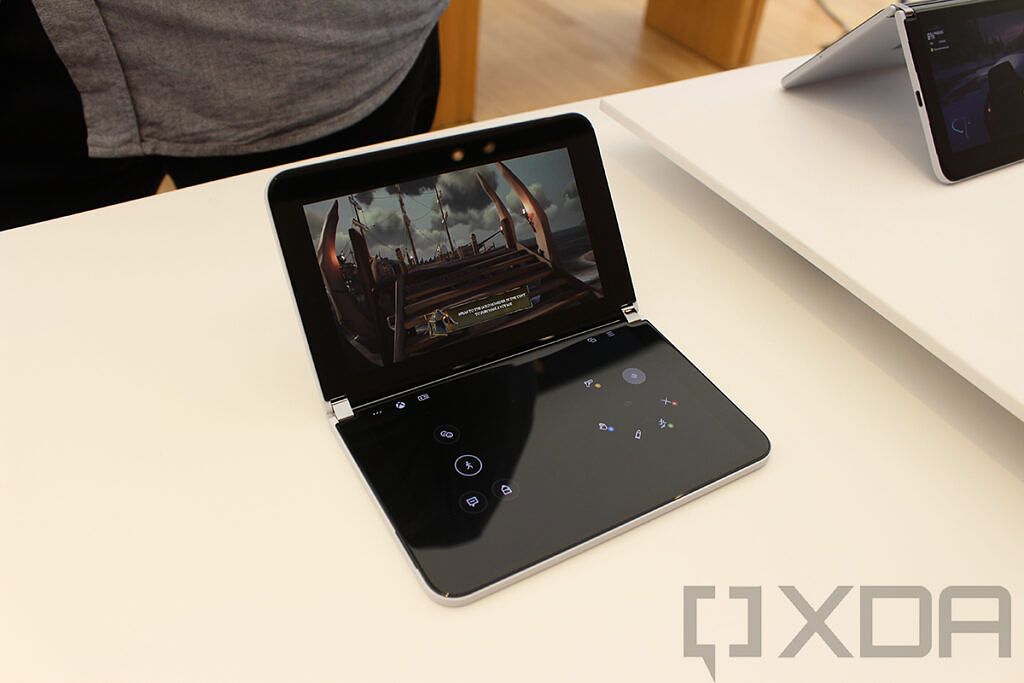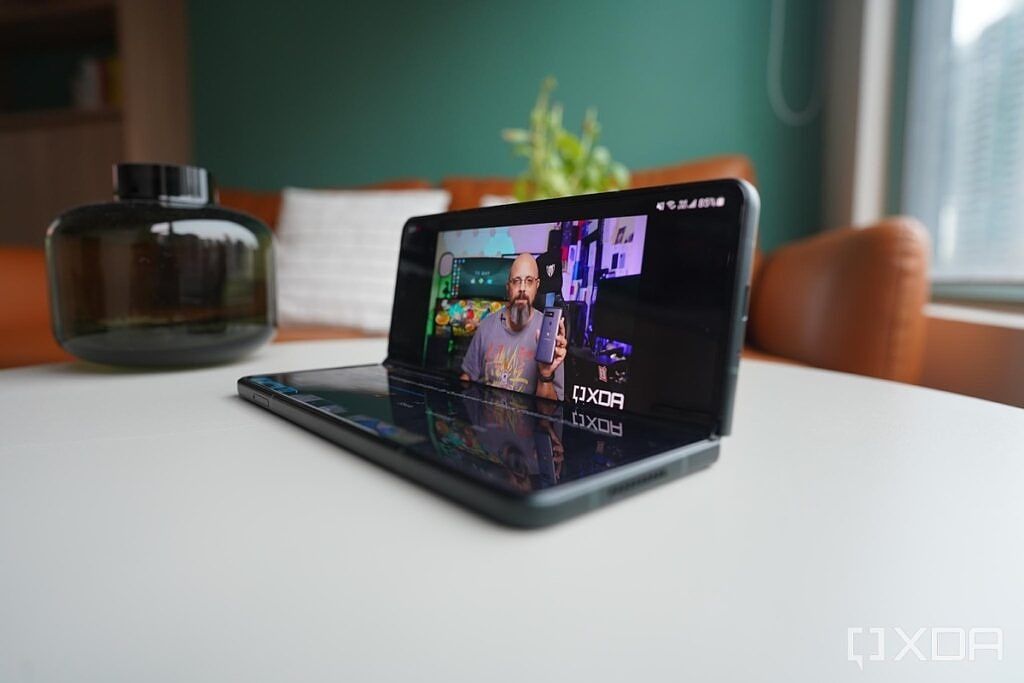While Samsung and other Android phone manufacturers are going the foldable route to provide more screen real estate in a smaller form factor, Microsoft has opted for the dual-screen approach with its Surface Duo devices. The company recently unveiled its new Surface Duo 2 that packs several improvements over the original. But how does it stack up against Samsung's flagship foldable phone, the Galaxy Z Fold 3? Read on to find out.
Navigate this guide:
- Specifications
- Design and Display
- Processor, RAM, Storage, and OS
- Cameras
- Battery and Connectivity
- Pricing
- Conclusion
Surface Duo 2 vs Samsung Galaxy Z Fold 3: Specifications
|
Specification |
Surface Duo 2 |
Samsung Galaxy Z Fold 3 |
|---|---|---|
|
Dimensions |
|
|
|
Display |
|
|
|
Processor |
Qualcomm Snapdragon 888 |
Qualcomm Snapdragon 888 |
|
RAM |
8GB |
12GB |
|
Storage |
|
|
|
Battery and charging |
|
|
|
Cameras |
|
|
|
Network and connectivity |
|
|
|
OS |
Android 11 |
Android 11 |
|
Biometric authentication |
Side-mounted fingerprint sensor |
Side-mounted fingerprint sensor |
|
Sensors |
Dual Accelerometer, Dual Gyroscope, Dual Magnetometer, Dual Ambient Light Sensor, Dual Proximity Sensor, Hall Sensor |
Accelerometer, Barometer, Gyro sensor, Geomagnetic sensor, Hall sensor, Proximity sensor, Light sensor |
|
Ports |
USB Type-C 3.2 Gen 2 |
USB Type-C 3.2 |
Design and Display
The Surface Duo and Galaxy Z Fold 3 are two very different devices in terms of design and form factor. While the Microsoft phone has two separate screens that combine to offer a large screen experience, the Samsung foldable uses a foldable display that unfolds into a bigger screen. Additionally, Samsung has also included a secondary screen that's pretty much the size of a regular smartphone's screen and can be helpful in odd tasks that don't need the larger screen. So you don't have to open the Galaxy Z Fold 3 every time you need something.
Unfortunately, since there's no secondary display on the Surface Duo 2, you have to open the device if you want to do anything on the phone. But there's one significant advantage of the Surface Duo 2. As Microsoft uses traditional screens with Corning Gorilla Glass Victus, Surface Duo 2's displays are stronger and more robust than the flexible display on the Galaxy Z Fold 3. The flexible display can be scratched or punctured much easily than the Surface 2 Duo screens.
The two screens on the Surface Duo 2 are joined by a hinge that supports the full 360-degree movement (more like 350-degrees since the camera module stops it from folding flat). So basically, you can take the screens from facing each other in the closed state to facing the opposite direction in the open state. This is helpful when you just want to operate one screen. On the other hand, the Galaxy Z Fold 3 hinge only supports 180-degree movement, but as mentioned, it has a secondary display for when you want to use the device as a regular phone.
In terms of the actual screen size, you get two 5.8 inch AMOLED panels with a 90Hz refresh rate on the Surface Duo 2 that combine to form an 8.3 inch screen. On the other hand, the Galaxy Z Fold 3 has a 7.6 inch flexible AMOLED screen with a 120Hz refresh rate. In addition, the secondary display on the Galaxy Z Fold 3 is 6.2 inches in size and includes an AMOLED panel with a 120Hz refresh rate and Gorilla Glass Victus protection.
Processor, RAM, Storage, and OS
Things become a lot more straightforward and similar in departments other than design and display. Both Surface Duo 2 and Galaxy Z Fold 3 use a Snapdragon 888 SoC and Android 11. But on the Samsung phone, you'll get 12GB of RAM, whereas the Surface Duo 2 only has 8GB. While 12GB RAM is nice to have, 8GB should be enough to provide a good performance on the Surface Duo 2.
Additionally, you get up to 512GB of storage on both phones, and the two companies have included software tweaks to use the extra screen real-estate effectively.
Surface Duo 2 vs Samsung Galaxy Z Fold 3: Cameras
Although the original Surface Duo has a single camera for selfies and regular photos, the Surface Duo 2 comes with three shooters for regular photos and a separate camera for selfies. The Galaxy Z Fold 3 also has three shooters for regular images, but there are two cameras that you can use for selfies.
Coming to the raw specifications, you get a 12MP wide-angle shooter with OIS, a 12MP telephoto camera with OIS, and a 16MP ultra-wide shooter on the Surface Duo 2. There's a 12MP shooter for selfies. In comparison, there's a 12MP wide-angle camera with OIS, a 12MP telephoto shooter with OIS, and a 12MP ultra-wide-angle camera. For selfies, you get a 4MP under-display camera and a 10MP shooter.
Battery and Connectivity
This is another area whether the two devices are pretty similar. The Surface Duo 2 features a 4,449mAh dual-battery with 23W fast charging support, whereas the Galaxy Z Fold 3 has a 4,400mAh dual-battery with 25W fast charging support. The Galaxy Z Fold 3 also supports wireless charging and reverse wireless charging.
Among connectivity options, there is 5G support, Wi-Fi 6, Bluetooth 5.1, NFC, and USB Type-C 3.2 on the Surface Duo 2. On the other hand, the Galaxy Z Fold 3 comes with 5G support, Wi-Fi 6E, Bluetooth 5.2, NFC, and USB Type-C 3.2.
Surface Duo 2 vs Samsung Galaxy Z Fold 3: Pricing
The Surface Duo 2 price starts at $1,499 for the base 128GB model, whereas the Galaxy Z Fold 3 will cost you $1,799 for the base 256GB model. So even if you consider the price of the 256GB Surface Duo 2 ($1,599), the Galaxy Z Fold 3 is $200 more expensive than the Surface Duo 2.
Conclusion
As you can see, the primary difference between the Galaxy Z Fold 3 and Surface Duo 2 lies in their design. Other specifications and features of the two devices are broadly similar. So the decision to pick between the two comes down to which design implementation you prefer. For example, if you like having two regular screens instead of a large foldable screen, the Surface Duo 2 is more up your speed. But if you prefer the foldable screen and don't have any problem with its relatively fragile design and higher price tag, the Galaxy Z Fold 3 makes more sense. The Galaxy Z Fold 3 is also a much more rounded and practical product -- so if you need a foldable that just works, Samsung has you covered better.
Which of the two phones are you planning to buy? Let us know in the comments section. We have also selected the best foldable phones and the best Surface PCs on the market if you want to consider more options.
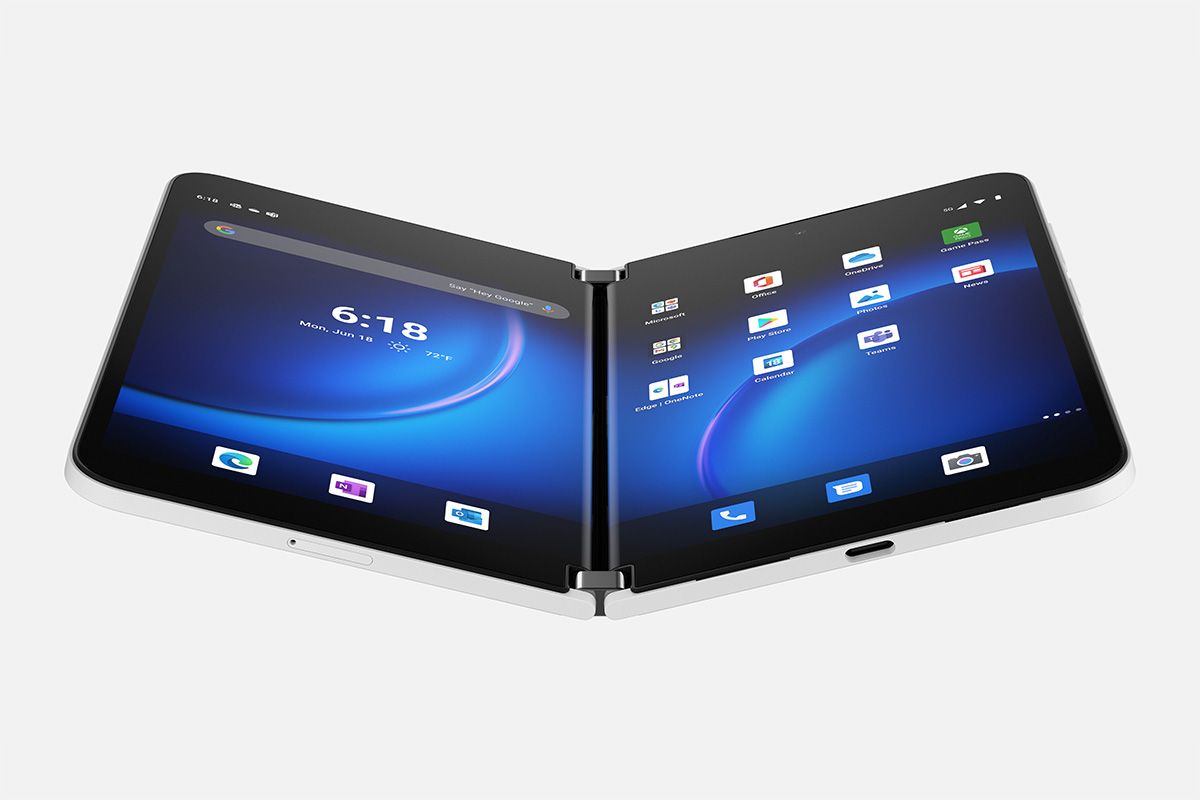
Microsoft Surface Duo 2
The Surface Duo 2 is Microsoft’s latest dual-screen Android smartphone. It's powered by a Qualcomm Snapdragon 888 SoC and runs on Android 11.
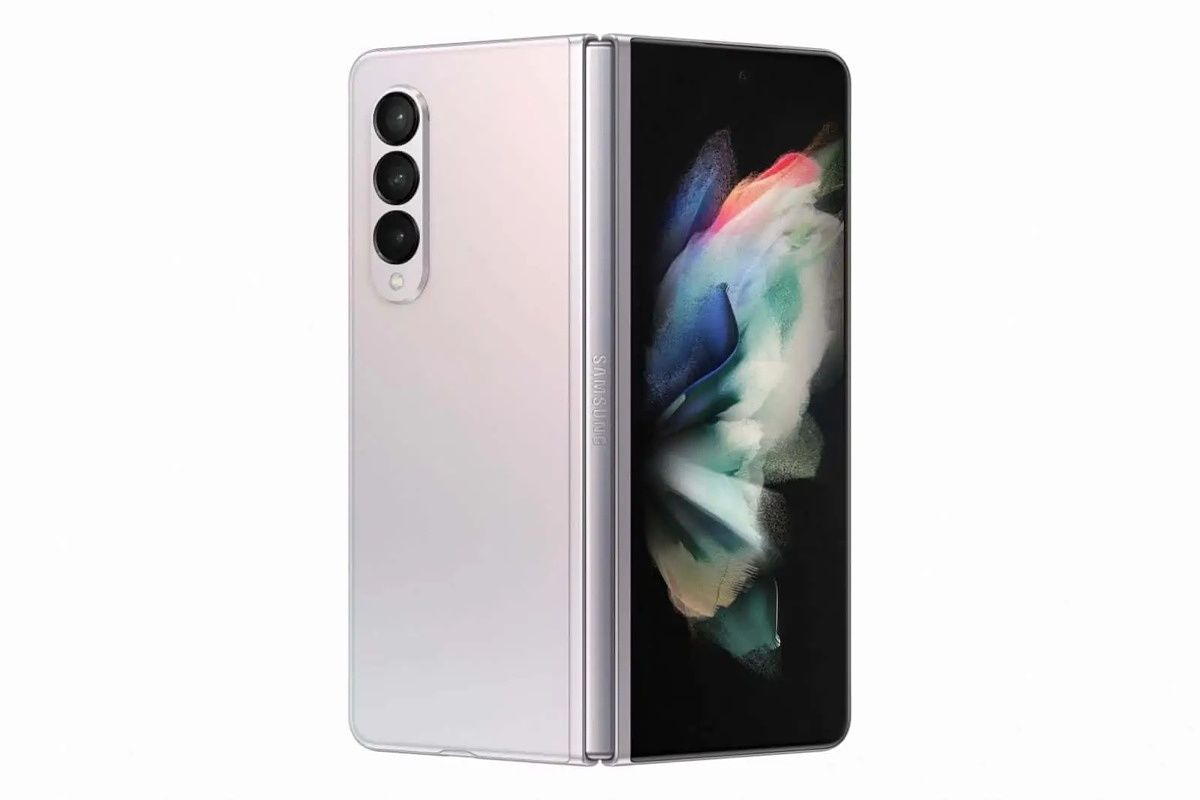
Samsung Galaxy Z Fold 3
The Galaxy Z Fold 3 is Samsung’s latest flagship foldable smartphone. It's powered by Qualcomm Snapdragon 888 SoC, and runs on Android 11 with One UI.
You can also read our individual Microsoft Surface Duo 2 review and Samsung Galaxy Z Fold 3 review for a greater in-depth view into each of these foldable devices.

